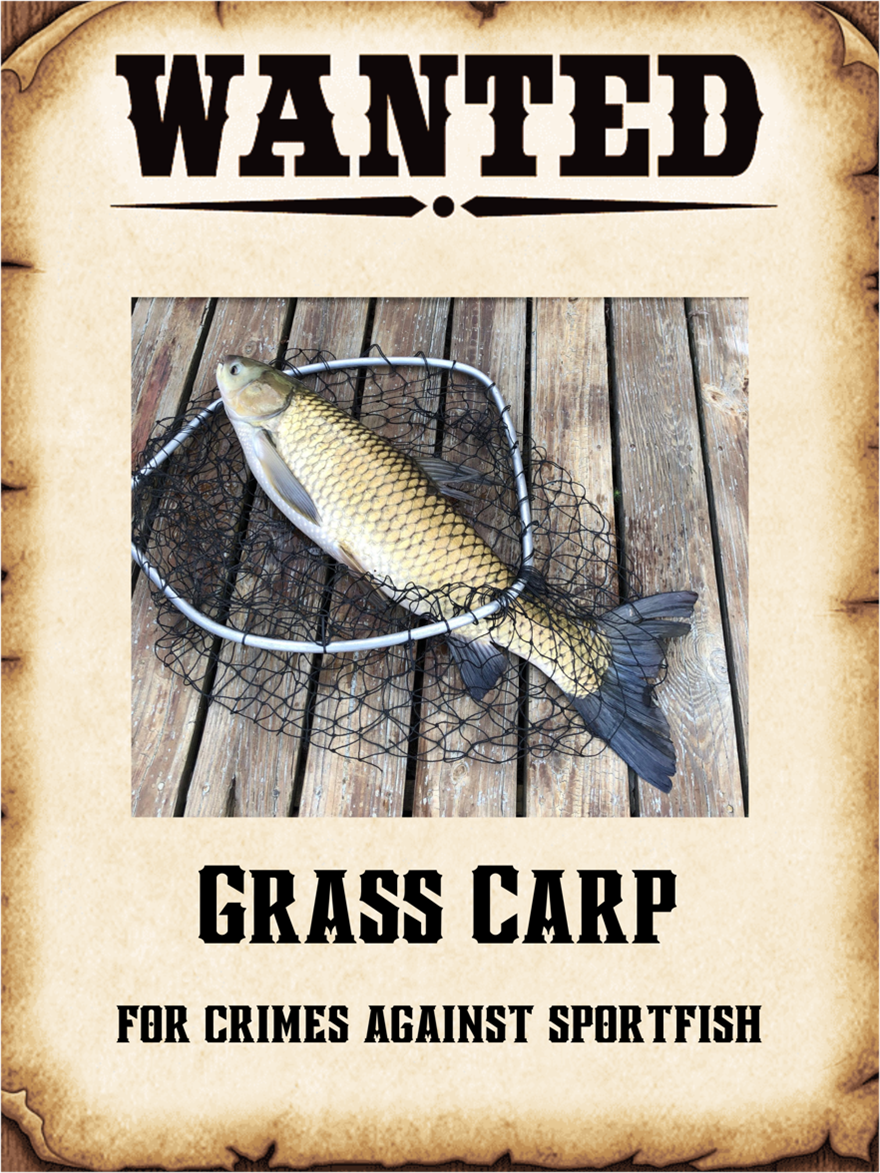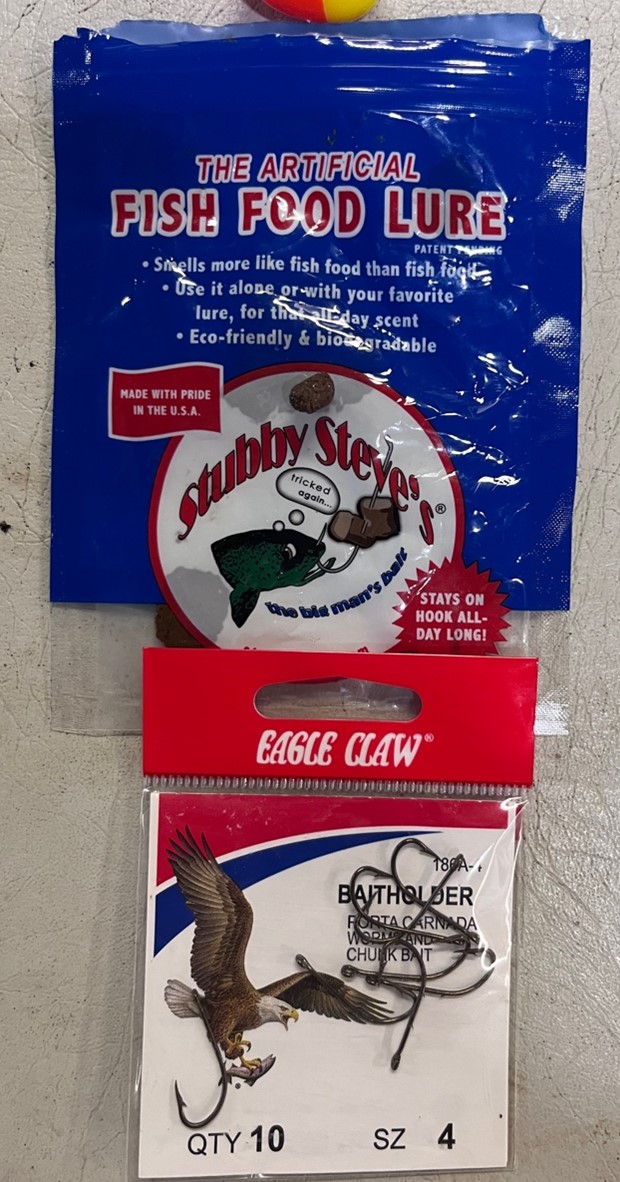Wanted - FTL's Grass Carp
You
Several years ago, approximately 900 Grass Carp (Ctenopharyngodon Idella) were introduced into FTL to help control excessive aquatic vegetation. The heavy vegetation is long since gone, yet the Grass Carp remain, with some reaching weights of over 25 pounds. While the fish’s hulking appearance may be intimidating, they are vegetarians and generally avoid human presence. However, their appetites and bottom disturbances unfortunately cause harm to our lake’s ecosystem, negatively impacting our sportfish and baitfish populations. They are now considered outlaws.
You can help us get the Grass Carp population under control! Everyone is encouraged to have fun trying to catch these monsters and remove them from the lake. As a bonus, their meat is mild, white, flaky, and quite tasty. These are not common carp (Cyprinus carpio) that are found in other state waters. If you’re up for the challenge, see some tips below for how to catch them.
Tips for Successful FTL Grass Carp Fishing
- In the summer these fish congregate around the lake’s fish feeders, making them easier targets. A
list of the lake's feeders and feed times is below.
- Feeder times and locations are arranged so you can travel the carp circuit from one spot to the next. If you don’t have luck at one feeder, or it is not working, simply move on to the next one.
- Feeders can broadcast food 50’ plus, so do not locate your boat directly in front of the feeder.
- Wind affects the direction the pellets float. Position your boat accordingly.
- Sometimes, casting your bait out just before the feeder goes off can be effective.
- Grass carp will eat worms, corn, acorns, grass clippings, tree blooms, etc. Since they regularly dine around the fish feeders, small brown baits like dough balls, fake fish food, and baked beans are good choices.
- Fly rods with floating food pellet imitations can work.
- In September and October, the Grass Carp’s diet shifts to falling acorns. This can be the best time of year to catch them by using acorns under oak trees that are actively dropping acorns.
- Grass Carp are very wary, so it is important to approach them quietly and with stealth when trying to catch them.
- Have a large dip net handy.
- Have a Rubbermaid type tub on your boat to put your catch in.
- Small hooks and light line (8#) will get more bites.
- Using a small bobber can help you cast light baits (such as a baked bean).
- Snagging may be an option; however, results have been inconclusive thus far so further studies are needed.
Feeder locations and feed times are as follows:
Castrodale Marina - 5, 6, 7, 8 pm
FTL East Leg
Lot 336 - Lilly 5:15, 6:15, 7:15pm
Lot 273 – G. Darby 5:30, 6:30, 7:30pm
Lot 301 - Fraley 2:45, 4:45, 5:45, 6:45, 7:45pm
FTL West Leg
Lot 18 - Pennington 5:15, 6:15, 7:15, 8:15pm
Lot 59 - Campbell 3:30, 5:30, 6:30, 7:30, 8:30pm
Lot 75 – M. Darby 7am and 5:45pm
For more information on Grass Carp fishing and removal, contact the following members of the Outdoorsmen Club:
Roger Fraley, Lot 301
Patrick Campbell, Lot 59
Brad Brush, Lot 303
Jeff Lambert, Lot 23

